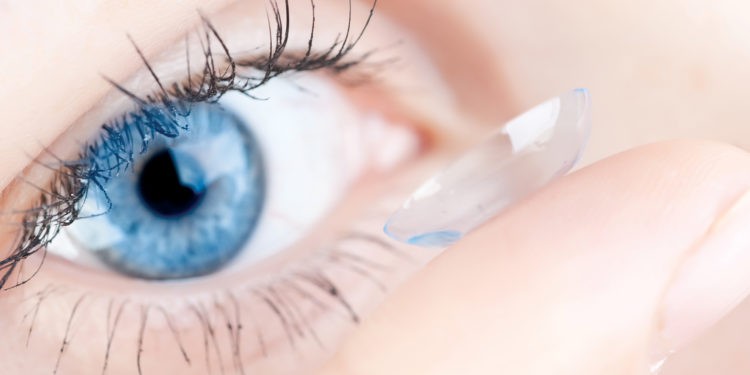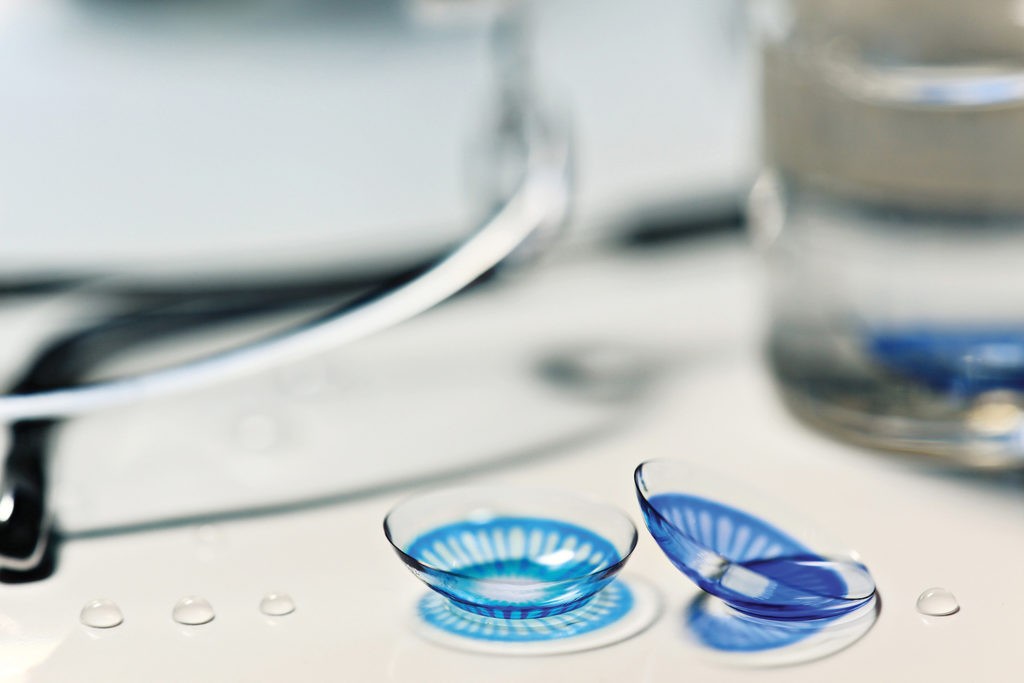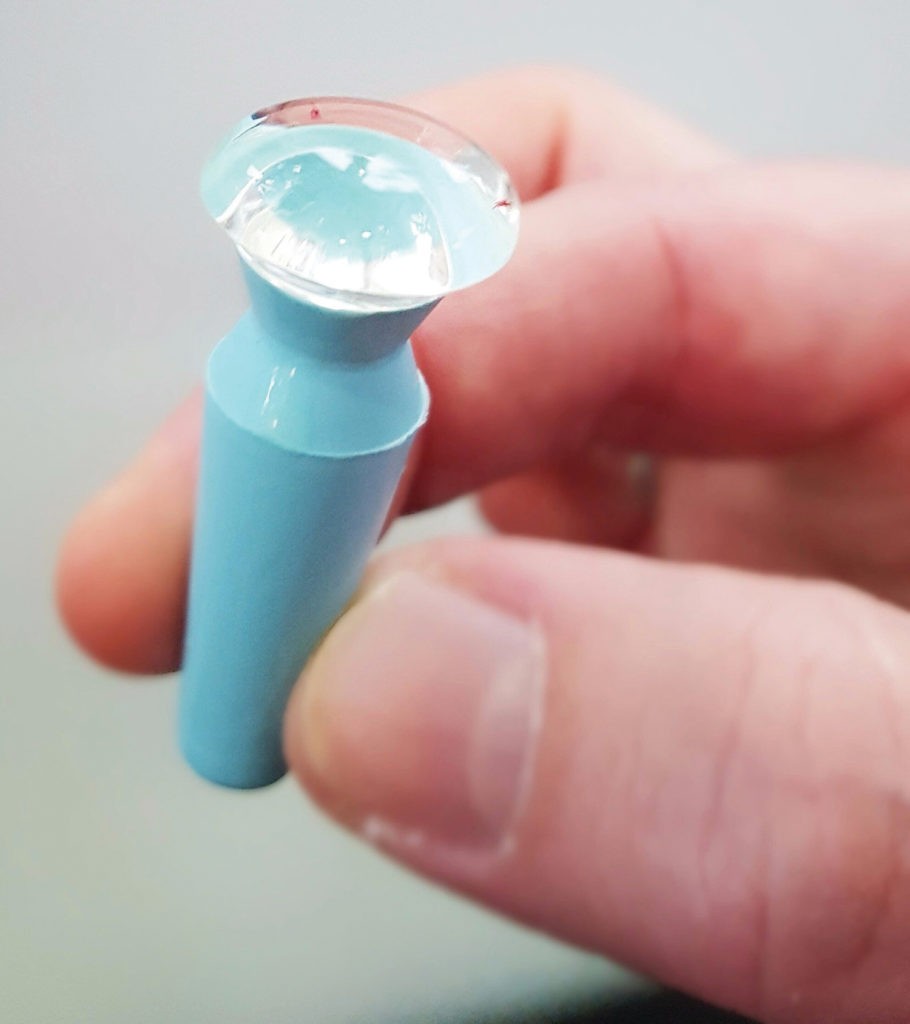Forward-Thinking Vision

The Experts at Grin Eye Care Make “Contact” with the Future of Technology
Exciting developments in optometry/ophthalmology are bringing the future of contact lenses within sight.
An estimated 24 million Americans wear contact lenses and most notably they wear them for vision correction purposes. However, now that we have transitioned appreciably into the 21st century, that number will undoubtedly escalate with the advent of contact lenses that go beyond the proverbial purpose of correcting vision. They say the rearview mirror is smaller than the windshield for a reason, and while many individuals have enjoyed contact lenses simply for vision correction and perhaps overall aesthetic appeal, the road ahead is filled with some exciting advances in technology, bringing the future of contact lens wear into clearer view.
The types of contact lenses on the horizon speak to the type of science-fiction-like technology that just might make the movies jealous. Imagine, for example, using contact lenses for disease monitoring, such as delivering medication to glaucoma patients; treating allergies or even giving relief to patients with dry eye issues. What if a damaged cornea could be repaired, restoring vision using stem cells embedded onto a contact lens in a non-invasive manner? Even the technology used in infra-red glasses by the military is now being incorporated into a contact lens, using a thin form of graphite that produces an electric current stimulated by infrared rays, converting them into a visible image, with applications extending beyond contact lenses.
“They are also working towards putting this technology into windshields to improve driving,” noted Dr. Lori Berwald of Grin Eye Care, who joined Dr. Jennifer Johnson in an exciting discussion about the contact lens availabilities of today and the exciting advances of related technology of tomorrow. Through these trusted professionals with decades of experience in the eye care arena, Grin Eye Care is able to provide contact lens patients the newest available materials and types of contact lenses, always keeping quality and optimum eye health at top of mind.
 A board-certified optometrist, Dr. Johnson has been with Grin Eye Care since 1995, specializing in comprehensive eye exams, treatment of various eye diseases, cataract and Lasik surgery pre-and post-operative management and also in the fitting of contact lenses on all types of patients. She has a strong focus on the fitting of soft, rigid gas permeable (along with scleral devices) and hybrid contact lenses for all patients, including those with astigmatism, loss of near vision, corneal disease and low visions.
A board-certified optometrist, Dr. Johnson has been with Grin Eye Care since 1995, specializing in comprehensive eye exams, treatment of various eye diseases, cataract and Lasik surgery pre-and post-operative management and also in the fitting of contact lenses on all types of patients. She has a strong focus on the fitting of soft, rigid gas permeable (along with scleral devices) and hybrid contact lenses for all patients, including those with astigmatism, loss of near vision, corneal disease and low visions.
 Dr. Berwald, a 1995 graduate of the Southern College of Optometry in Memphis, Tennessee, worked for other high-profile metro area practices prior to joining Grin Eye Care in 2003. She specializes in the diagnosis and treatment of ocular disease, contact lens care, and pre and post-operative care of patients undergoing cataract and refractive surgeries. Dr. Berwald has also relied on her extensive experience in the realm of contact lens care and management to train ophthalmology residents and ophthalmic technicians and students at the University of Missouri-Kansas City.
Dr. Berwald, a 1995 graduate of the Southern College of Optometry in Memphis, Tennessee, worked for other high-profile metro area practices prior to joining Grin Eye Care in 2003. She specializes in the diagnosis and treatment of ocular disease, contact lens care, and pre and post-operative care of patients undergoing cataract and refractive surgeries. Dr. Berwald has also relied on her extensive experience in the realm of contact lens care and management to train ophthalmology residents and ophthalmic technicians and students at the University of Missouri-Kansas City.
Among the many advances in contact lens technology to which these doctors look forward include the auto-focusing lenses for presbyopia, a condition most people develop around age 40 that requires the reliance upon reading glasses.
“We currently have the multi-focal lenses, but they are not perfect for distance,” noted Dr. Johnson. “The auto-focusing lenses will be able to change focus depending on where you look.”
Dr. Johnson also referred to scleral lenses, available now, which were essentially the first contact lenses made back in the 1800s and are now used for dry eyes and other eye diseases. A scleral lens, also referred to as a scleral contact lens and an ocular surface prosthesis, is a large contact lens that sits on the sclera, creating a tear-filled vault over the cornea. These lenses are designed to treat numerous eye conditions that don’t necessarily respond to other forms of treatment.
“Scleral lenses are treatment for dry eye patients, keratoconus, and corneas that have been damaged from trauma. Scleral lenses will not cure these diseases, but do allow the patients to have clear and comfortable vision, something that may not be possible with glasses or standard contact lenses.” explained Dr. Johnson.
Some patients are even opting to undergo cataract surgery at a much younger age than may be medically necessary, if only to enjoy clearer vision without the hassle of topical contacts or glasses.
“Patients can have a clear lens extraction now, taking out the lens and still getting the benefit of a refractive procedure at a younger age,” noted Dr. Berwald.

But the excitement doesn’t stop there. Have you ever wondered what it would be like to become a real-life Terminator, a la Arnold Schwarzenegger? The exciting world of virtual reality may soon come to contact lenses.
“These contacts will be designed for people with normal vision, providing digital content over them which is incorporated into the contact lens. For example, they can establish an image in the lens for gaming,” noted Dr. Johnson, emphasizing these lenses are for entertainment purposes only, operating like a smart contact lens controlled by the blinking of the eyes. “These will have an application in the lens that can pull up information on people’s names and locations, and can be used with a companion device, such as a smart phone.”
Another exciting advancement in contact lens technology points to those with macular degeneration and low vision issues.
“These lenses are used to enhance what one sees by magnifying the image,” stated Dr. Berwald. “This can create improvement in daily activities, such as driving, reading or just writing a check because it gives that needed visual magnification.”
Other high-tech contact lens possibilities include a camera/video recording device in the lens that can be paired with high-tech glasses and controlled by blinking.
“Of course, that type of lens would come with some privacy concerns,” cautioned Dr. Johnson.
As researchers dive deeper and deeper in the realms of technology, they are unveiling potential new uses for contact lenses, including noninvasive means of monitoring diseases, such as patients who need to monitor blood glucose levels for diabetes or intraocular pressure associated with glaucoma.
“Not necessarily for vision purposes alone, health monitoring lenses can monitor certain conditions by looking at one’s tears to determine what is going on in the body,” noted Dr. Johnson. “These types of contact lenses will take measurements of certain elements in tears to measure glucose levels in the body. For diabetics, this would mean no more finger pricks to measure glucose levels.”
Once the tears are studied, the data would be reported to a platform, such as a doctor’s software system, through the use of blue tooth technology via a microchip in the lenses powered by a tiny (very tiny!) antenna.
“What still needs to be determined, however, is how close the glucose in tears correlates with actual blood glucose levels,” noted Dr. Johnson.

Other types of pending contact lenses include those that can measure a person’s vital signs. For example, in 2011, Sensimed released the first commercial smart contact lens that records specific changes in the curvature of the cornea. These disposable lenses, worn for just 24 hours once or twice a year, provide physicians data on intraocular pressure fluctuation (IOP).
“A patient’s IOP can fluctuate as much as 10 points in one day, and this type of contact lens would give the doctor a better idea as to the status of the patient’s glaucoma,” expressed Dr. Johnson, also noting that research has been conducted to determine if contact lenses are a viable means by which to deliver medication, such as ophthalmic drugs (eye drops) used for treating glaucoma.
And for those who are anticipating something out of those wild science fiction movies, research is being conducted into the use of contact lenses for electronic viewing purposes and augmented reality, combining real and virtual aspects to create a seemingly seamless world between real life and fantasy.
Since they have been introduced, contact lenses have changed the lives of people daily, improving not only one’s vision but also quality of life. As technology opens the door for increased uses for contact lenses, it would seem the opportunities for new uses for contact lenses are unlimited. However, because advances in technology take appreciable time, don’t call your eye professional today in anticipation of securing a pair of any of these high-tech contact lenses immediately. In addition to ample research and development, the prototypes also have to undergo numerous studies and clinical trials.
Additionally, no matter for what purpose contact lenses are made, either today or in the future, they still need to be deemed as a medical device and should only be dispensed and fitted by a trained eye care professional to ensure the highest level of safety and health for patients. For that level of quality, experience and trust, the eye care professionals at Grin Eye Care stand at the ready.
“We fit many patients with contact lenses and also attend numerous classes to learn the latest in cutting edge technology to understand better what we can provide for our patients,” emphasized Dr. Berwald.
For more information on contact lens technology, eye health and other ophthalmologic procedures, or to schedule a visit with Dr. Johnson or Dr. Berwald, visit Grin Eye Care at 21020 West 151st Street in Olathe; call 913.829.5511; or go online at grineyecare.com.

l-r: Craig Place, M.D.; Jeff Wongs, M.D.; Lori Berwald, O.D.; Jennifer Johnson, O.D.; Barbara Wolock, M.D.; Milton Grin, M.D.; Anne Wishna, M.D.; Breanne Niebuhr, O.D.; Emily Enright, O.D.; Jamie McGowan, O.D. and Jeffry Gerson, O.D.







